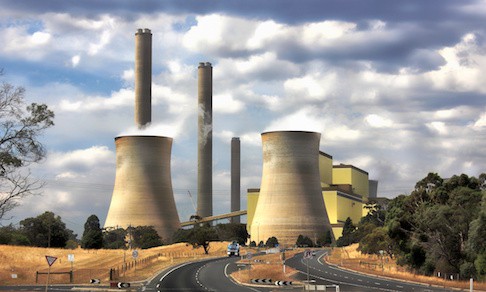Published by the Australian Financial Review, Monday 12 June
Alan Finkel’s energy review has met the objective set for it. His Blueprint for the Future can deliver a secure, reliable and affordable electricity system for Australia while ensuring the nation can meet its commitments to reduce greenhouse gas emissions.
Energy market reform in Australia began in the 1990s and was successful for years. But then it drifted into today’s stormy seas of high prices, questionable security and static emissions. The Finkel blueprint is an opportunity to set sail for the next 20 years in a fit-for-purpose craft with inbuilt capacity to respond to the political, scientific, environmental and economic challenges that await. There will be many.
Successfully meeting these challenges hinges on a small subset of the Blueprint’s 50 recommendations.
Three good points
To begin at the politically sensitive beginning, the blueprint proposes a clean energy target (CET) to end the uncertainly caused by the absence of a credible climate-change policy over more than a decade. The CET will ensure the electricity sector can credibly deliver its share of Australia’s promised emissions reductions. It will support the lowest-cost technologies, regardless of whether they are wind, solar, hydro, gas or low-emissions coal. This means clear signals for investment and lowest prices for consumers.
Second, the blueprint proposes to end concerns about the security and reliability of our electricity supply. These concerns arose because of the failure to integrate high levels of intermittent renewable energy, driven by narrow policies such as the Renewal Energy Target. The blueprint puts requirements on all generators to ensure a secure, reliable system. The requirements are designed to deliver this result through the most cost-effective means available, including batteries, pumped hydro, gas and incentives to encourage households and businesses to reduce their demand during peak times.
Third, the blueprint proposes critical changes to governance of the electricity market. In the past, the combination of the COAG Energy Council and associated market bodies has lacked focus and been plagued by blame shifting and lack of accountability for delivering agreed reforms. Finkel’s recommended Energy Security Board will help fix these issues. It will be accountable for delivering the required outcomes of the blueprint’s recommendations, through a strategic energy plan endorsed by the COAG Energy Council. It will also provide whole-of-system oversight of energy security and reliability, including the impact of any other government policies designed to reduce emissions.
Keeping an eye on gas
Gas is important to Australia’s energy system, if only because it is driving up the cost of electricity. The blueprint recommends the Australian Energy Market Operator monitor the gas generation sector and intervene if gas shortages threaten electricity reliability. Sensibly, it proposes avoiding blanket restrictions on gas development.
There are specific recommendations that individual stakeholders will reject or approach warily. Wrangling over these could condemn the blueprint to failure. Cautious support, with the detail to follow, provides the best opportunity for the political compromise that all Australians should expect from our leaders. In his approach to date, the federal minister, Josh Frydenberg, has demonstrated that this is achievable.
The Coalition government should support the blueprint because it delivers the best balance across the three goals: affordability, security and low emissions. Setting a high threshold for the Clean Energy Target would address the concerns of those who see the mechanism as being technology biased (that is, anti-coal) without compromising its capacity to meet the emissions reduction target.
State and territory governments should support the blueprint because it provides a framework to address their concerns about lack of federal government action on climate change. And it does this while dealing with reliability and security concerns that arise from narrowly focused renewable energy support schemes.
The Greens should also support it
The Blueprint delivers Labor the opportunity to end the climate war and meet the concerns they share over electricity security and affordability.
The Greens and environmental activists will be concerned the target is too weak, the role of coal and gas is too big, and there is an unfair burden on intermittent renewable energy. These are important concerns, but they can be answered. First, it was not Finkel’s role to decide on the emissions reduction target. He has designed a vehicle to meet any target. It will be up to the federal government to decide how fast to drive this vehicle. Second, coal and gas will be part of the CET model only to the extent consistent with the electricity sector meeting its target at lowest cost. That is the right answer. And, third, there is sound logic in having the market value reliability as much as it values low emissions.
Some economists will bemoan the CET as being less effective or efficient than an emissions trading scheme, carbon tax or emissions intensity scheme. But modelling for Finkel and other reviews shows that the differences between the economic results from these alternatives is small – smaller than the margin for error built in to modelling. The differences are not worth debating.
The focus in coming days will be on the blueprints’ problems and weaknesses rather than its opportunities and strengths. But the reality is that aiming higher is simply unachievable for now – and aiming lower will doom us to higher prices and lower security. Australia’s choice is clear.
 Published by the
Published by the